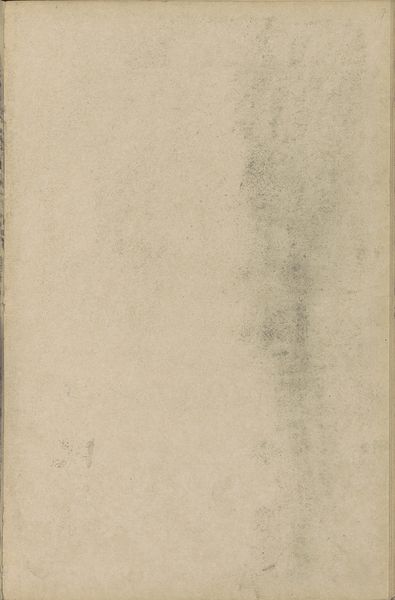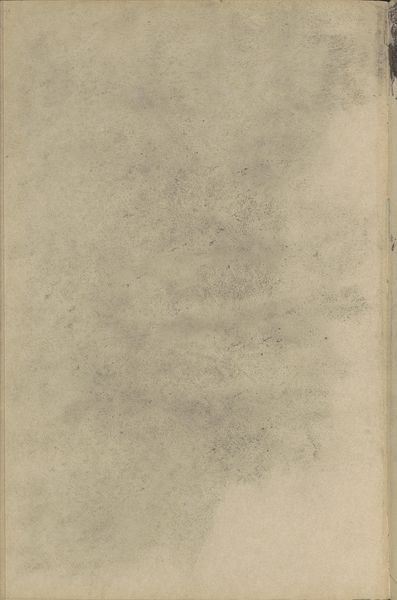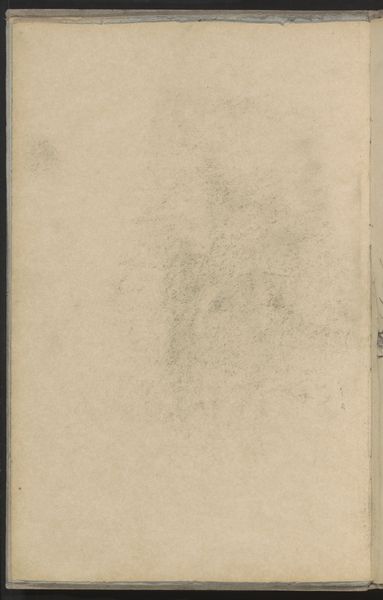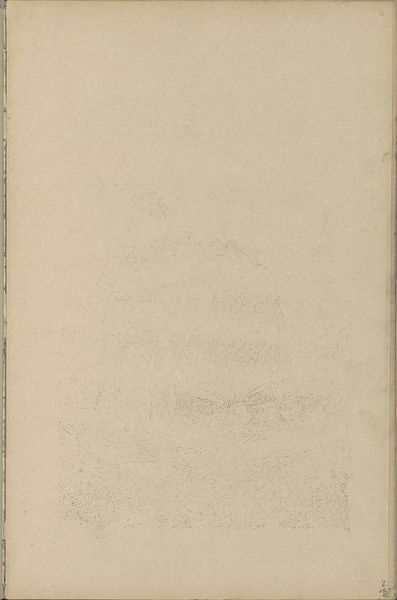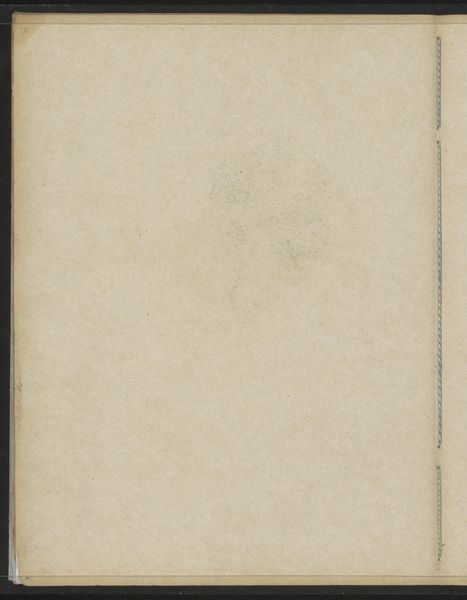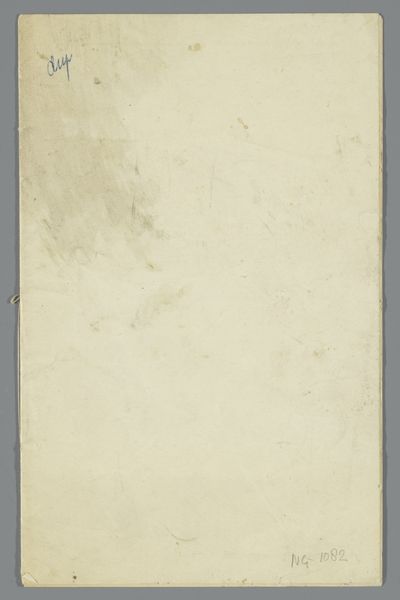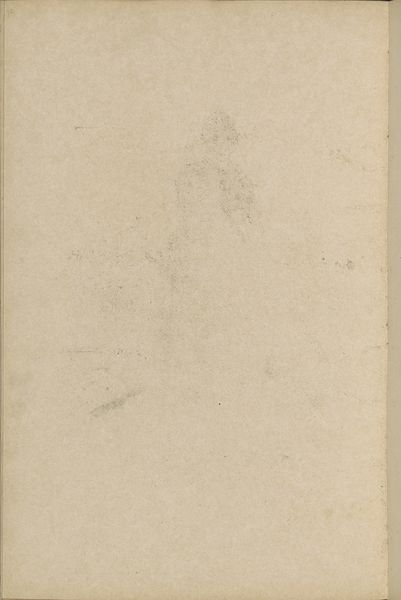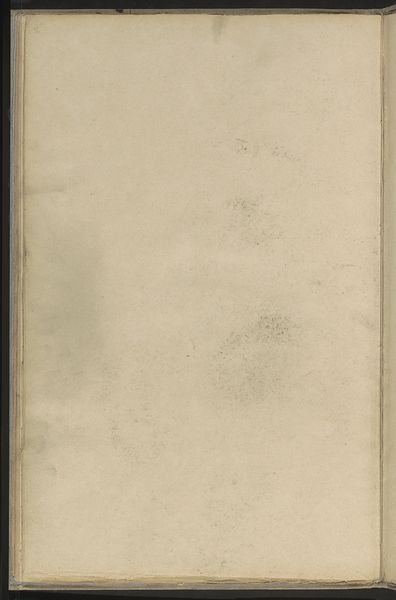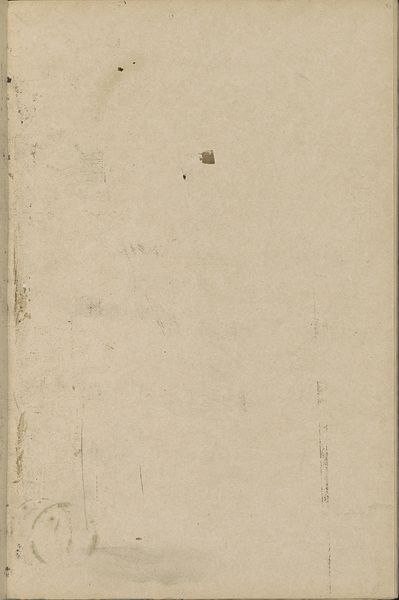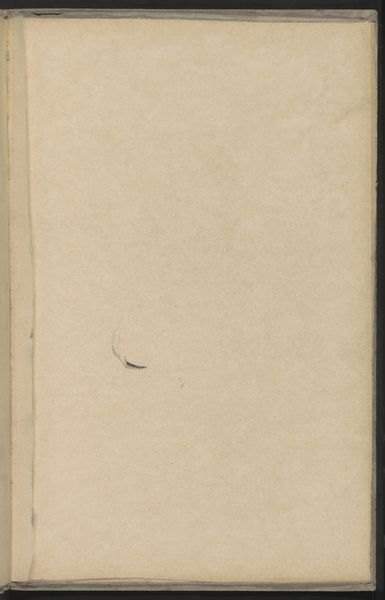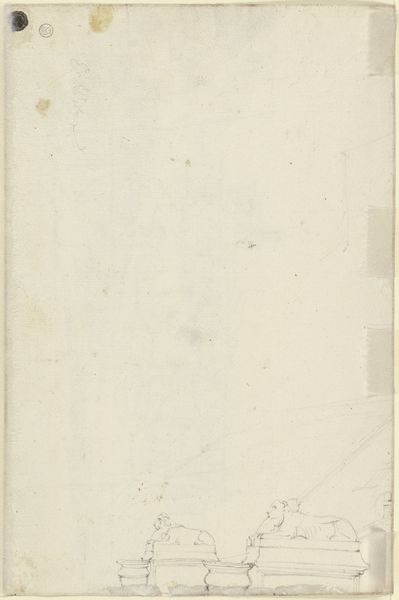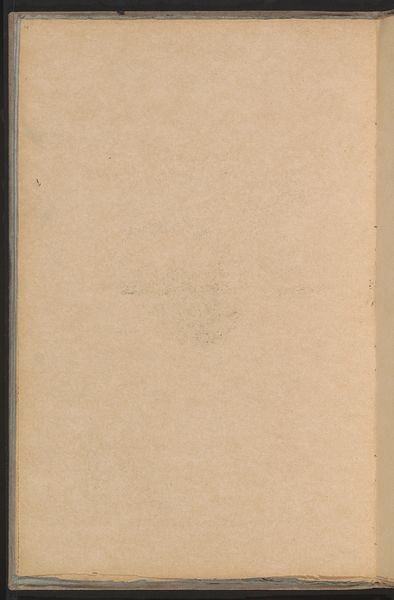
drawing, paper
#
drawing
#
impressionism
#
paper
#
monochrome
Copyright: Rijks Museum: Open Domain
Curator: Here at the Rijksmuseum we have "Abklatsch van de losse tekening RP-T-1964-235-44-1", an interesting drawing by Willem Witsen, created sometime between 1884 and 1887. Editor: My initial reaction is one of… quietness. The monochrome palette lends itself to a somber, almost haunting, feeling. The tall, vertical form at the center – is that a shadow? It gives a strong sense of place and mood but what is it exactly? Curator: It is, as the title suggests, an "Abklatsch" or a transfer drawing. Think of it almost like a primitive form of printmaking, likely from another of Witsen's sketches of Amsterdam's architectural landscape. During that time there were immense political demonstrations from workers’ unions demanding for rights to improve living conditions in a poverty-stricken environment. Editor: So the work's intention may have been to capture something politically-charged but the softness, the tonal subtleties, the very visible texture of the paper – these aesthetic decisions communicate something more gentle. Curator: Witsen had an appreciation for subtle aesthetics that were at odds with the heavy political messaging of the time. This transfer technique suggests a level of intentionality of presenting an "authenticity" that only painting "en plein air" allowed for in that day and age, which often elevated painting above sketching. Editor: Yes! The use of monochrome really highlights the subtle shifts in tone and value and makes it a statement by simply allowing viewers to engage without visual information. Curator: Ultimately it represents a certain time of art being at its most socially acute that elevated a particular view point that aligned itself to the political rhetoric that favored the political classes of Amsterdam. Editor: That really changes how I see the drawing. Knowing Witsen’s background and the artistic intentions gives the viewer another layer to explore the piece with an alternate view, an artist working in an anti-aesthetic landscape that gave visual language to a new cultural phenomenon that favored all audiences. Curator: Exactly! This is just one fragment of how Dutch drawings and sketching played such a massive political and artistic role, making Witsen’s work worthy of observation within any art community.
Comments
No comments
Be the first to comment and join the conversation on the ultimate creative platform.
